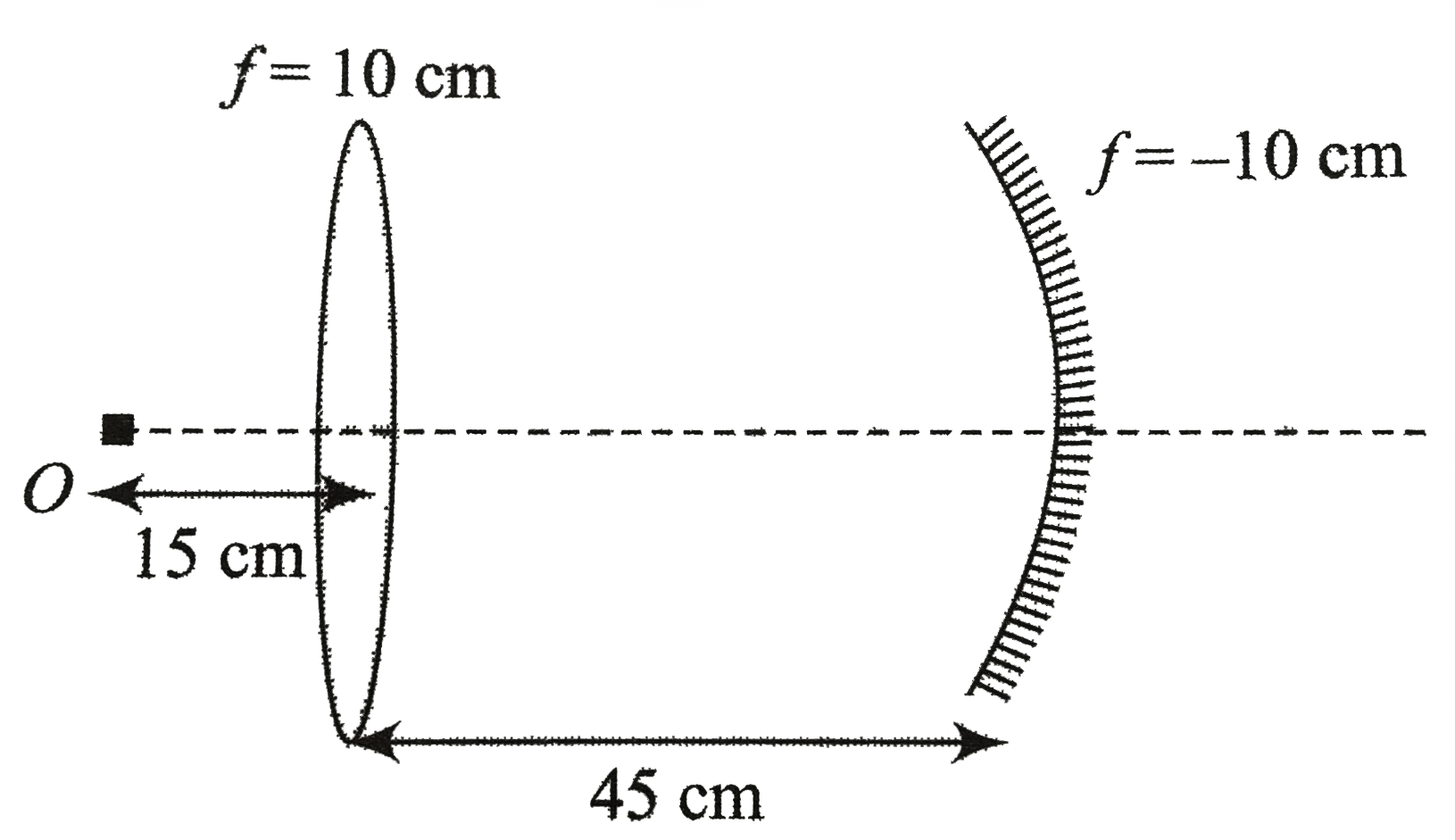Figure shows a point object and a converging lens. Find the final image formed.

1v−1u=1f
1v−1−15=110
1v=110−115=130
v=+30cm

Topper's Solved these Questions
- GEOMATRICAL OPTICS Book:RESONANCEChapter:GEOMATRICAL OPTICS Exercise:Problem
Explore 33 Videos
- GEOMATRICAL OPTICS Book:RESONANCEChapter:GEOMATRICAL OPTICS Exercise:Exercise-1
Explore 142 Videos
- EXPERIMENTAL PHYSICSBook:RESONANCEChapter:EXPERIMENTAL PHYSICSExercise:PART -II
Explore 10 Videos
- GRAVITATIONBook:RESONANCEChapter:GRAVITATIONExercise:HIGH LEVEL PROBLEMS
Explore 16 Videos
Similar Questions
Knowledge Check
An object is placed before a convex lens. The image formed
Ais always erectBmay be erect or invertedCis always invertedDis always realAn object is placed before a convex lens. The image formed
Ais always realBmay be real or virtualCis always virtualDis always erect
In Figure. , find the position of final image formed.

View SolutionWhere must an object be placed in front of a converging lens so that the image formed may be
upright and enlarged
View SolutionWhere must an object be placed in front of a converging lens so that the image formed may be
at infinity
View SolutionWhere should an object be placed in front of a convex lens so as to obtain its real, inverted and magnified image?
View SolutionAn illuminated object is placed on the principal axis of a converging lens so the a real image is formed on the other side of the lens. If the object is shifted a little,
View SolutionAn object placed on a metre scale at 8 cm mark was focussed on a white screen placed at 92 cm mark, using a converging lens placed on the scale at 50 cm mark.
(i) Find the focal length of the converging lens.
(ii) Find the position of the image formed if the object is shifted towards the lens at a position of 29 cm.
(iii) State the nature of the image formed if the object is further shifted towards the lens.
View Solution



